Build a landing page that actually converts!
So, you’ve got an amazing digital marketing campaign, with attractive ads that will be irresistible to your target audience, and the leads are rolling in. But once your potential customer has arrived at your website, what’s the first thing they’ll see? The Internet is full of endless content they could be looking at instead of your business’s page - if you don’t capture their attention quickly, they'll click away just as easily as they came.
In this case, first impressions really do matter. A digital marketing campaign is only as good as the number of leads it converts into actual customers. That’s where your landing page comes in.
A landing page is,a web page that displays after clicking an ad or link. This will sometimes just be your site’s home page, but since this can overwhelm the user with information, it’s usually a standalone page or pop up banner. Your curious clicker doesn’t need to know everything about your business right up front - you just want to equip them with the information they need to take the next step, and give them incentive to do so.
Sound simple enough? Check out our tips below for building a landing page that will grab their attention.
Consider Your Options
The first step is to determine what kind of landing page will be appropriate for your business. Ideally, a minimal landing page should be utilized - light on copy, with a focus on a single headline and image. Simplicity is key - you don’t want to scare them off with a wall of text on their first visit. You want to ease the consumer into their first experience with your brand.
Of course, depending on your business, there are exceptions to this rule. For real estate landing pages, customers may want a lot more information - they’re not likely to commit thousands of dollars based on two lines of snappy copy and a picture of a smiling couple in front of a house. They’ll want to feel as informed as possible before making their decision.
Reflect on your business model and put yourself in your audience’s shoes. Every business is different. Your landing page is your first chance to engage and build trust with your potential customers. Plan accordingly.
Include a Call to Action
If there’s just one facet of your landing page that can’t be stressed enough, it’s the importance of a solid call to action (CTA). A CTA prompts the user to engage with your business. This could be a form to sign up for a mailing list, or a button that will start a free trial. For a good example, check out Netflix’s landing page:
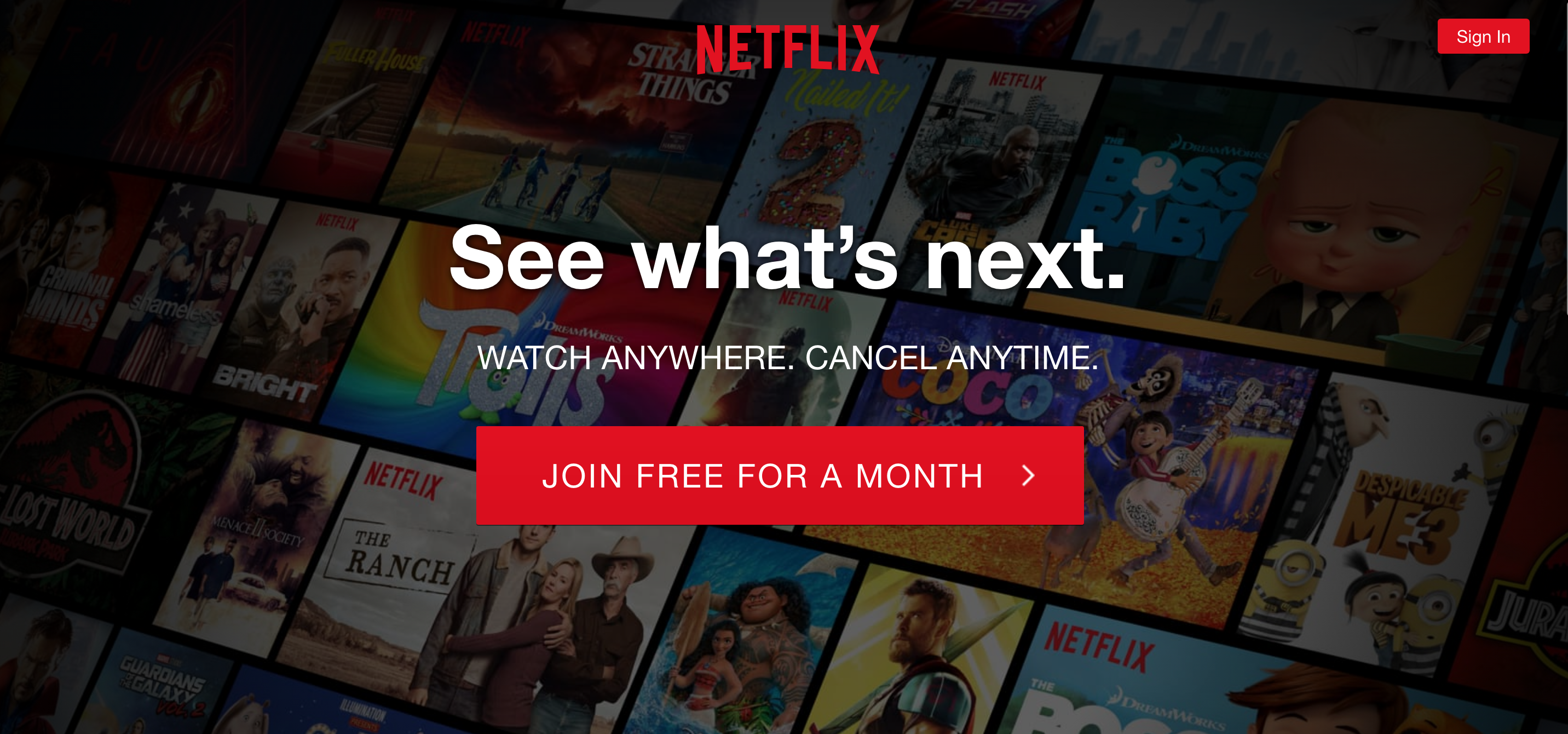
This CTA is effective is because it communicates the ease of use of the product (“watch anywhere”), gives the customer a solid benefit (“Join Free for a Month”) and puts to rest some concerns they might have (“cancel anytime”). It’s light on text, and scans easily. There’s no binding contract or costly commitment in sight.
One of the most common CTA’s is a blank field to sign up for a mailing list. Again, this requires very little commitment from your potential customer, but gives you an important opportunity to connect with them in the future.
If a free trial option isn’t relevant for your business, a limited-time offer makes a great CTA as well. If you’ve got a specific popular product or service you’re trying to promote, put it on your landing page. Stress that there’s only a short window of time for the customer to take advantage of your great offer, before their chance is gone for good.
Imagine yourself as a potential customer visiting your website for the first time. No matter how high-quality, reliable, and even downright virtuous a business may sound from the landing page text, your first thought will be, “Yeah, that’s great, but what’s in it for me?”
Your call to action is a chance to offer something concrete. Use language that highlights what the customer will receive, rather than what they have to do. Phrases like “Click to get a free trial” or “Click to download our e-book” come with an obvious benefit to the clicker, rather than highlighting what they have to do.
Write Compelling Copy
If only it was as simple as saying, “make sure the words you put on the page are good”. Writing effective copy is tricky - it’s easy to overdo it with wordy blocks of text or, worse, sell yourself short with generic or inconsistent messaging. It should be simple, to the point, and speak directly to the needs of the customer. Good copy should:
Scan easily. Write your copy headline-first. The headline should clearly communicate what your business is about, and what you’re capable of doing for your customers.
Build trust. Include reviews and testimonials from satisfied consumers. Choose reviews that your audience would connect with, from people they can relate to who had the same concerns your current customers had before they chose you. Take this opportunity to highlight your business’s record of customer satisfaction.
Offer a unique selling point. Highlight what sets your business apart. If you offer extra services that aren’t industry-standard, or have received awards for your product, that should be reflected on your landing page.
Solve a problem. Your potential customer has a problem to solve or need to fulfill. They likely already know what they’re looking for - but why is your product the best for them? If possible, cite specific numbers and statistics to show the benefits of choosing your business over others.
Khan Academy’s landing page does a great job with the above principles:
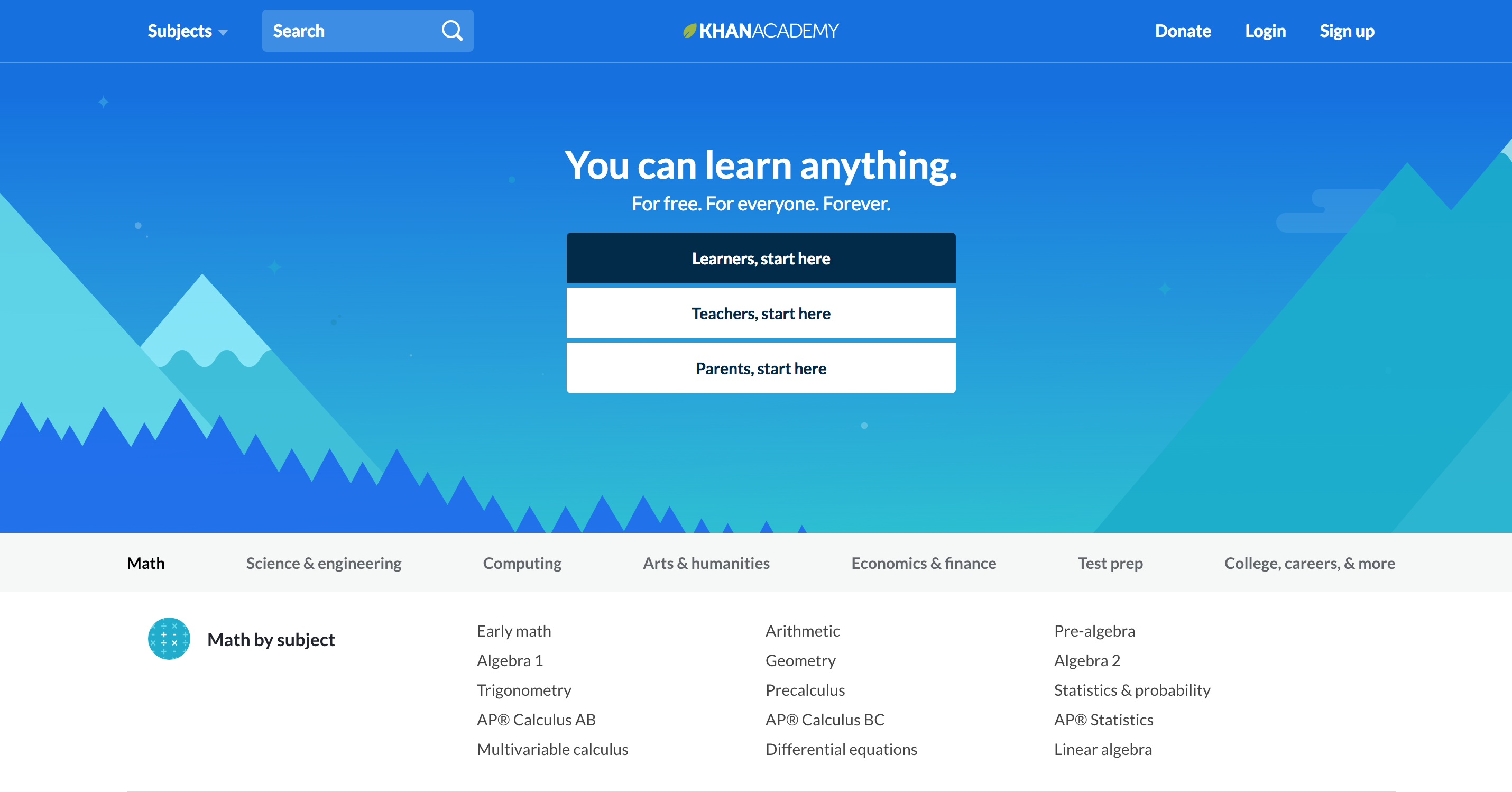
The selling point, “You can learn anything” clearly outlines what need the product will fulfill. “Free. For Everyone. Forever.” is a unique selling point. Most importantly, it’s clear to the reader what the next step is in engaging with Khan Academy.
When it comes to writing copy, the simpler the better. Otherwise you might end up with a landing page like this:
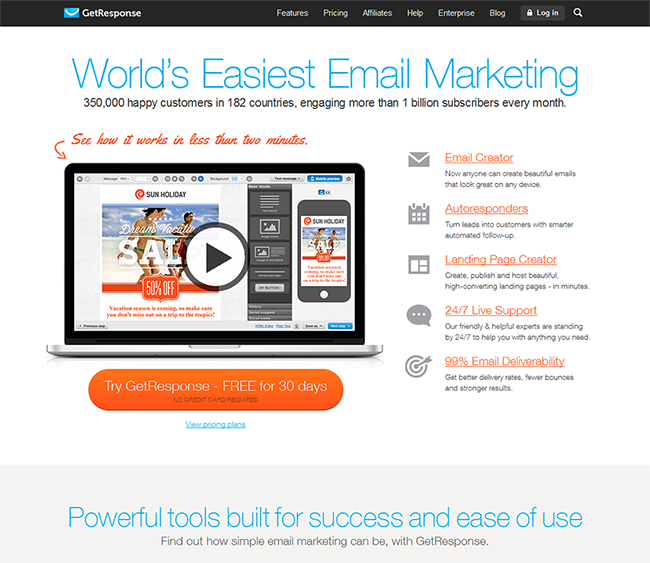
This page is a little all over the place. It doesn’t scan very easily, and it’s not clear to the audience where the focus is. This page could do with a little streamlining and a greater emphasis on the CTA.
Choose Effective Images
Images have a powerful effect on a potential consumer. When chosen carefully, they’re an excellent way to help your viewers retain information. Some things to keep in mind:
Choose images that will connect with your audience. Give your audience someone they can relate to. For example, a photo of a millennial couple will probably not be as effective if your business’s primary audience consists of wealthy retirees.
Use original photos. If possible, invest in producing your own high-quality images rather than using stock photos. Stock photos often have a strange feeling of phoniness and unreality that won’t connect with your customers. It’s much more relatable to see a real person with your product, or inside one of your facilities. Show former customers who’ve had a great experience with your business.
Check out Airbnb’s landing page for a good example of effective image choice:
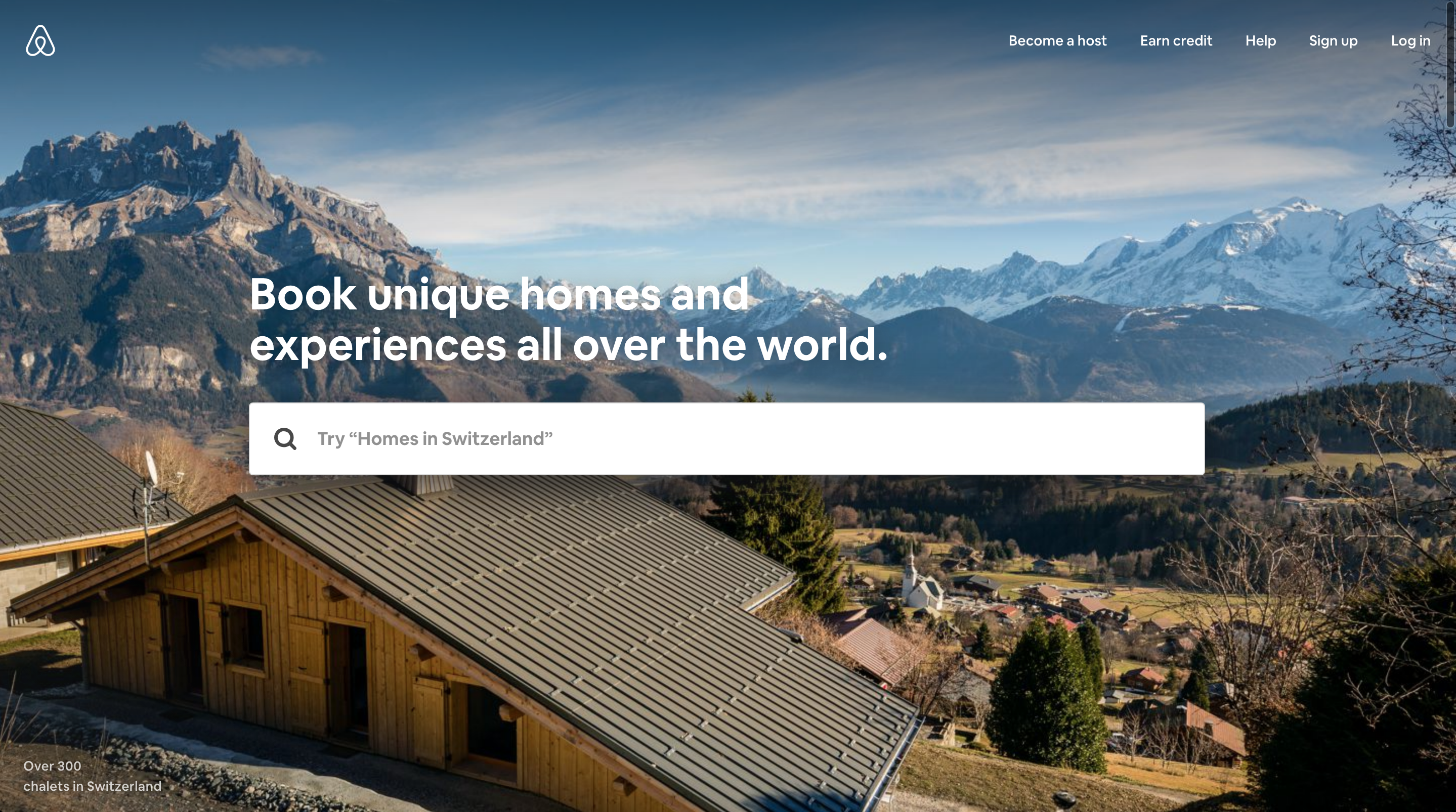
The enticing image of Switzerland complements the call to action nicely. It helps the user imagine what the experience of using the company’s product might be like.Your own landing page images should help your audience make this connection.
For another example of how custom-made images can serve your landing page, check out Instamotor’s:
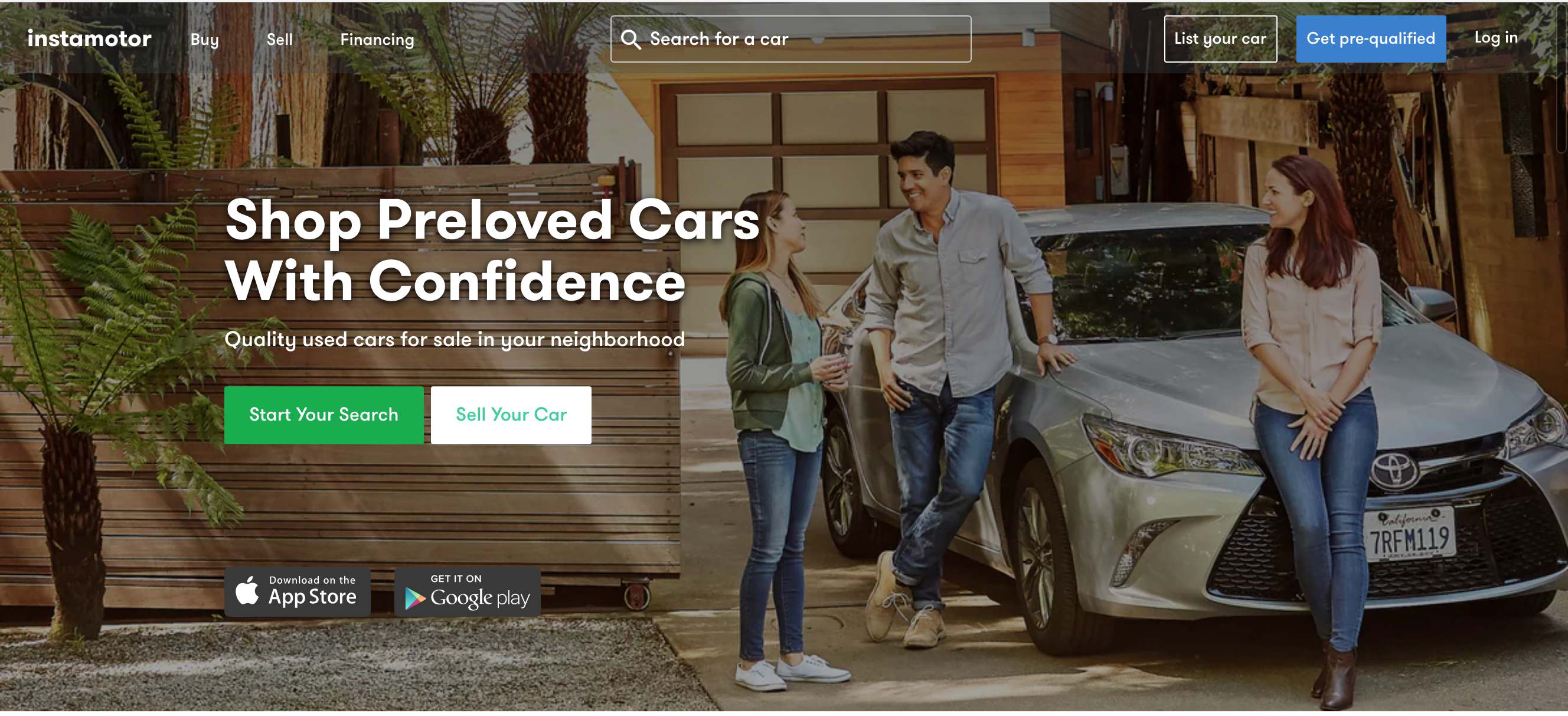
Again, the image clearly relates to the call-to-action: car buyers happy with their new purchase. For something as important as the purchase of a new car, building trust with the audience is essential, and the organic feel of these custom-made photos suits this goal a lot better than a standard stock photo would.
Make It Mobile Friendly
Consumers in the U.S. spend up to five hours a day on their mobile devices. Your entire website should be easily viewable on mobile, and your landing page is no exception. Test your landing page on a variety of platforms to ensure the best experience for any mobile users.
Personalize Multiple Landing Pages
Another option to consider, if appropriate for your business, is to target smaller segments in your audience. Build multiple landing pages, each designed for their own niche audience. Here are a few examples of ways you could utilize alternate landing pages to target consumers:
Use location
Utilizing a user’s location is a great way to personalize your landing page. For example, you could have a city/region form field automatically filled in with the user’s location. Small things like that make it that much easier for the user to complete your form, and that much more likely that they’ll convert. You could also target the user with specific products based on their location, like cold weather gear in places where this would be appropriate.
Use information from your ads. If you’ve already crafted a variety of ads to target specific consumers, half the work may be done for you already. Consider setting different ads to lead to different landing pages, that appeal to niche audiences for the same reasons your ad might have.
Engage interested consumers
If someone has arrived at your landing page from an email you’ve sent to them, you know they’re already invested to some extent. Now is the time to show them specific products or services that will interest them.
Your mailing list should prompt your audience to input their name as well as their email address:
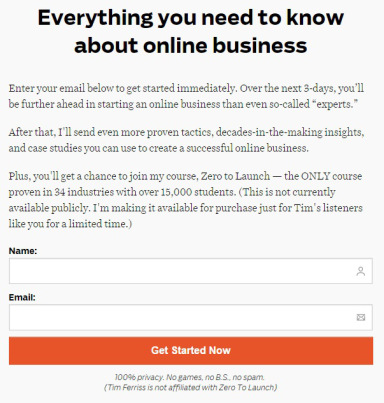
You can use this information to personalize your emails and even your landing page, building trust with your customer by using their name in the subject line or body of emails you send out.
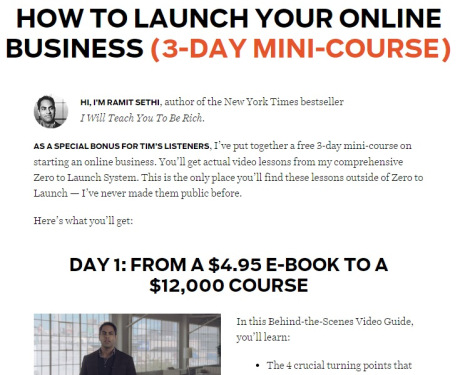
This copy, “as a special bonus for Tim’s listeners…” makes the audience feel like they’re privy to information that not just anyone has access to. Little moments of personalization like this can go a long way towards building trust in your brand.
Take Inspiration from Other Successful Businesses
Brands like Lyft, Netflix, and Khan Academy have become household names, and not just because of the services they offer. Their marketing campaigns, from lead to conversion, ads to landing pages, are highly effective. Check out this list of some of the most successful landing pages to get some inspiration for your own.
After Your Landing Page Is Up...
So you’ve designed a great landing page with attractive copy, images, and a solid call to action. You’ve gathered plenty of solid leads and converted some of them into potential customers. But your job isn’t over yet.
Make sure your website follows through. The customer’s experience on your website should match the ease and satisfaction promised by the landing page. If not, your leads will dry up, and all your hard work will go to waste. An attractive landing page leading to a clunky, difficult interface won’t do your business much good.
Update your landing page as needed. Your landing page is a good opportunity to show off seasonal sales or special events. If appropriate, update it often with your best offers and promotions.
Follow up with customers who have engaged. Set up your mailing list so it will automatically send a “Thank You” email to customers who have signed up.
Conclusion
Building an effective landing page that will capture your audience’s interest is essential to conversion. The tips above should get you started in considering what copy, images, and CTA’s will be most effective in accomplishing your goals. Before long you’ll have a landing page that will actually get results!
Don’t get too attached to your page, though - it will likely need to be updated moving forward. As your business evolves, so too will your landing page. It will need the same time and attention you give to the rest of your marketing campaign. Updating your landing page often will draw in more leads, and keep your current customers coming back for more.
Sources Used Above:
https://techcrunch.com/2017/03/03/u-s-consumers-now-spend-5-hours-per-day-on-mobile-devices/
https://blog.hubspot.com/marketing/fantastic-landing-page-examples